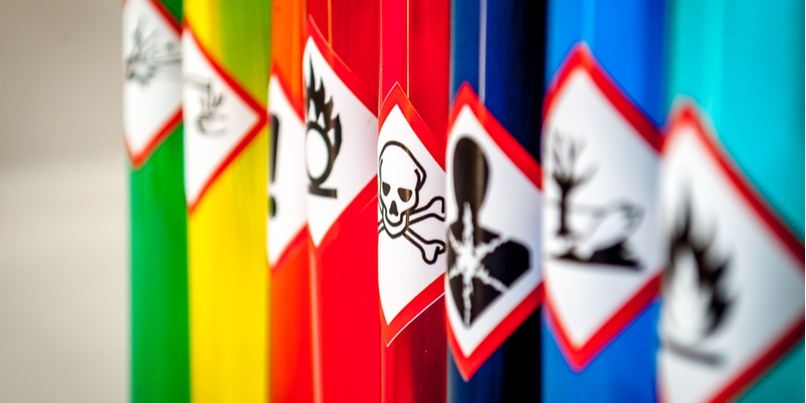 The 1997 Chemical Weapons Convention (CWC), signed and ratified by 192 state-parties globally, is a multilateral treaty that bans the use of chemical weapons under international humanitarian law, and requires their destruction within a specified period of time.
The 1997 Chemical Weapons Convention (CWC), signed and ratified by 192 state-parties globally, is a multilateral treaty that bans the use of chemical weapons under international humanitarian law, and requires their destruction within a specified period of time.
The treaty prohibits the developing, producing, acquiring, stockpiling, or retaining of chemical weapons; the direct or indirect transfer of chemical weapons; the use of chemical weapons by the military; the assistance, inducement or encouragement of other states to engage in CWC-prohibited activity; and the use of riot control agents as a method of warfare.
Thankfully, acquiring, producing, and dispersing chemical agents is more easily said than done, as many CWAs are dangerous to acquire and handle; require highly sophisticated expertise and technology to produce and are often difficult to disperse in a sufficient quantity to inflict harm.
Nonetheless, it is vital not to underestimate the inherent risk to global security of any deliberate chemical attack. With that awareness comes an increasing need for military personnel and first response teams to be prepared for the unique challenges of an act of chemical warfare.
The act of chemical warfare is the use of any chemical with the intent to kill or incapacitate humans, animals or the environment. Chemical warfare agents (CWAs) are typically categorized as blister, nerve, choking, blood and riot-control agents (such as mustard gas, sarin, chlorine, hydrogen cyanide and tear gas) and the effects are felt immediately upon inhalation or skin contact.
CWAs can be employed in various ways, whether as a threat or through actual deployment, and to gain a strategic or tactical advantage. The agents may be lethal or nonlethal in nature, and may be targeted against an individual, a group, or a larger population.
The longstanding challenge for CBRNe trainers within the US military has been to create realistic and authentic exercise scenarios that accurately reflect the conditions and risk of a real-life CWA incident.
So what are the current training options available?
Live Agent Training (LAT)
Live agent training (LAT) is considered the peak of chemical warfare training, as it offers an opportunity for students to experience the characteristics of an actual chemical threat (including GB (sarin) and VX nerve agents and HD (mustard) agents) in a controlled manner.
LAT provides invaluable experience in preparing trainees to be combat ready, but alongside the host of benefits, the training does also bring with it real risks. The CWAs used are high-grade (usually 90-95 percent purity) which means that highly trained staff need to be on site to strictly monitor a training exercise.
LAT is also subject to stringent environmental and administrative regulations, with government departments working closely with the military and environmental agencies. And because exercises can only be carried out in carefully controlled locations, and with strict controls on the release and handling of the live agents, this can result in a perception of “unrealism” for trainees.
Simulant Agent Training (SAT)
The use of simulants in CBRNe training follows the same principles as LAT, but with the use of simulant agents that model the properties and behaviour of real CWAs.
While the use of actual detectors during exercises does make SAT a highly realistic form of training, it also has its shortcomings. SAT necessitates the purchase and storing of expensive substances, the use of chemical simulants can cause damage to real detectors which can compromise their operational readiness, and the fact that trainees can usually see the trainers releasing the substances can make for an unrealistic experience. Repeatability and training area saturation are also problematic.
CBRNe Training Using Simulators
An alternative to both LAT and SAT is the use of life-like simulator detectors that utilise new generations of intelligent computer-based technology to accurately replicate how real detectors react when exposed to a range of chemical agents.
Simulator detector technology takes into account the unique volatility of each chemical agent, the tactics and techniques used to detect different agents, and the significance of prevailing weather conditions. There is also no requirement for live sources and (aside from the cost of replacement batteries) no need to purchase expensive consumables.
Cost considerations
When considering the cost of simulators as opposed to using real detectors for CBRNe training, it’s important to keep in mind to cost of purchase versus the cost of ownership over the lifetime of the device.
The true cost of an actual detector involves a combination of multiple factors (including maintenance, repair, calibration and the purchase of simulants) all of which can significantly increase the cost of that item over its lifetime.
When utilising live sources or simulants in CBRNe training exercises it’s also important to take into account the financial commitment associated with regulatory compliance and land remediation.
Damage to actual detectors is another key factor to consider, as it’s not uncommon for students to accidentally damage or break a real detector during a training exercise, which can result in a significant cost for repair or replacement.
Well-designed simulator detectors, on the other hand, are designed to tolerate incidents of student misuse, and are built with the ability to immediately reset rather than going into “wait” mode, which saves both time and expense.
The necessity to create realistic CWA training scenarios is crucial to the preparedness of the military and first responders worldwide to ensure they are confident and knowledgeable to handle the challenges of any chemical incident.
In selecting the most viable training method for chemical warfare agent training, it is important to consider the authenticity of the training experience, the capacity for exercises to be easily set up and repeated, and the true cost (both in terms of time and money) that the training method will incur.
